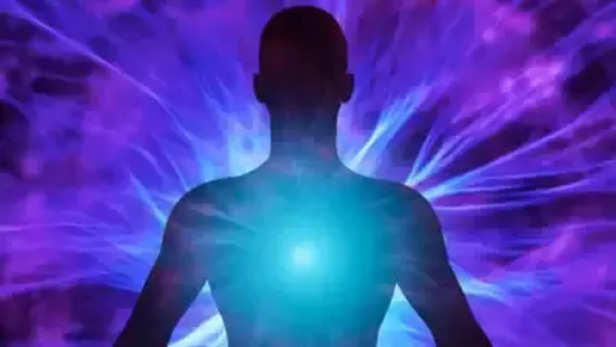Life after death. It’s one of the oldest questions in human history, one that’s inspired everything from ancient texts to the most cutting-edge scientific research. But somehow, in all the searching, the answer seems to slip further and further out of reach, almost like we’re all looking in the wrong places. Science tells us a lot about the physical universe—how things work, what happens when we die, and the science of consciousness. The Gita doesn’t just talk about death—it reframes it. Not as an end, but as a part of an eternal cycle. Not something to fear or puzzle over, but something to understand and embrace.
1. What We Are, Beyond Our Bodies
We are eternal souls, not just physical bodies.
The Bhagavad Gita opens with a profound idea that we often overlook, we are not our bodies. We are not the physical forms we inhabit, not the flesh and bone, nor the experiences we accumulate over time. At the core of who we are is something unshakable, something that can’t be touched by death. Krishna, in his discourse with Arjuna, says simply: “The soul is never born, and it never dies.”
In modern terms, think of it like this: the body is a car, and the soul is the driver. When the car breaks down, the driver doesn’t cease to exist; they just find another vehicle to continue the journey. Death, then, isn’t something that annihilates us. It’s simply a shift, a change in form. It’s an inconvenient interruption in our linear perception of time, but one that doesn’t end the story.
We get so caught up in our physicality, in the ticking clock of life, that we forget the truth at our core—that we are more than our bodies. We are consciousness itself, and that consciousness, like the universe around us, is infinite and ongoing.
2. The Continuity of the Soul
The soul is eternal; death is a shift, not an end.
Krishna’s teachings emphasize that the soul is eternal. It’s not a mere concept or metaphor. It’s a reality that transcends birth and death. Every lifetime is but one chapter in a much larger, much grander narrative. Science, in all its brilliance, can measure the age of stars and the length of our lifespans. But it can’t measure the soul. The Gita suggests that when we die, it’s not the end, it’s simply a passage. The soul, freed from its bodily constraints, moves on to another form—another existence.
This is not reincarnation as some supernatural event, but as an undeniable truth of the cycle of life. The universe, in its vastness, is constantly evolving, and the soul is part of that never-ending process. When we think of death as a destination, we miss the point. The journey is not linear, nor is it bound by the constraints of time. It’s cyclical, and it’s always in motion. The moment we accept this, life begins to make sense in ways we never imagined.
3. Karma and Its Role in Life’s Unfolding
Our actions shape our destiny across lifetimes, beyond time.
But here’s the catch: the Gita doesn’t let us off the hook. While the soul may be eternal, our actions—our choices—still matter. Krishna introduces the concept of karma, the law of cause and effect. Every action, every thought, and every word creates ripples in the universe. Those ripples don’t vanish; they return to us in ways we can’t always predict but that always shape our destiny.
Karma isn’t some cosmic ledger keeping track of your good deeds and bad deeds. It’s more like a reflection of your deepest intentions. It’s the energy you send out into the world, the vibrations you create through your actions, and the way those vibrations reverberate back to you. This principle doesn’t just apply to your present life; it follows you across lifetimes, shaping your experience at every turn.
The Gita teaches that we can control the direction of those ripples. If we act with awareness, with intention, and with compassion, we shape a future that aligns with our higher purpose. The key is understanding that life and death are part of a larger, interconnected web. And how we live—how we engage with others, how we care for the world around us—has an impact far beyond what we can see.
4. The Wisdom of Letting Go
Detach from outcomes, live consciously, and embrace peace.
And then there’s the most challenging part of Krishna’s wisdom: the ability to let go. The Gita teaches us to perform our duties without attachment to the results. This doesn’t mean becoming apathetic or indifferent. It means understanding that we cannot control the outcome of our actions. We can only control our intentions and the integrity with which we live our lives. This is where peace lies.
The fear of death often comes from our attachment to things—our relationships, our achievements, our identities. We hold on tightly, convinced that if we lose any part of ourselves, we’ll cease to exist. But Krishna tells Arjuna, and us, that the more we let go of this attachment, the more we understand that we are not defined by what we own or what we accomplish. We are defined by our essence, by the eternal soul that can never be taken from us.
In a world that teaches us to grab hold of everything—material success, social status, even time itself—the Gita offers a radical message: Let go. Live fully, without fear of the end, because it’s not the end. It’s just another phase in the journey.
5. Death is Not the End
Death is part of an eternal journey, not the end.
So, here we are, confronted by death, the one certainty we all face. And yet, the Gita offers us the most profound comfort: it’s not the end. Life is not a one-way street. It’s a winding, endless road that stretches far beyond our understanding. It’s not for us to control or even to fully comprehend. What we can do, what we must do, is live consciously. Live with the awareness that our actions, our choices, are part of a larger cosmic dance.
Science might tell us how the body deteriorates, how our atoms break down and return to the earth. But the Gita tells us something deeper: our essence—the soul—is forever. And that truth is not something you can measure or analyze under a microscope. It’s something you feel, something you know in your heart.
The Bhagavad Gita doesn’t just give us an explanation of life after death. It gives us the wisdom to understand that life—our lives—are not limited by death. The soul’s journey is eternal, and death is just another chapter in a story that transcends time. Because in the grand, eternal scheme of things, time is just another illusion.
















